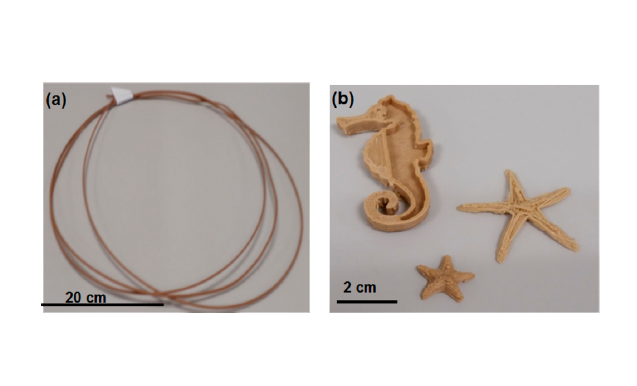
Image credit: newsroom.melbourne.edu
Researchers from the University of Melbourne’s Department of Chemical and Biomolecular Engineering have developed a new, cheaper, cleaner and more accessible way to 3D print smart polymers that can perform a function.

Image credit: newsroom.melbourne.edu
Lead researcher Dr Luke Connal explained that these smart and functional polymers “are not the inert objects we are used to associating with 3D printed objects”, as they can perform a function in a particular environment by instigating a chemical reaction.
“We have developed interesting materials that can be printed on the more affordable range of 3D printers, like the ones you can buy in hardware shops these days,” Dr Connal said.
“Basically we are trying to add function to these 3D printed objects. Rather than just having a inanimate printed object, we are creating something that you can do something else with,” he said.
Mr Connal and PhD students Milena Nadgorny, Chao Chen and PostDoc Fellow Dr Zeyun Xiao have outlined several potential areas for future applications of these new materials in the paper “Three Dimensional Printing of pH-Responsive and Functional Polymers on an Affordable Desktop Printer”, published in ACS Applied Materials & Interfaces this week.
One possible application for such an object is cleaning up environmental toxins. Another possible application is accelerating a chemical reaction by adding a catalyst for treatment of environmental pollutants and flow control.
“The smart polymers could be used in a few ways. A flow regulation device has been made, which consists of a polymer valve that opens and closes to control the flow rate of water, dependent upon the pH of the water flowing through it,” it says in the media release by the University of Melbourne.
“The second is a catalytic device that can remove an environmental pollutant from water. In the experiment conducted, the 3D printed polymer catalyst is placed in a yellow (contaminated) solution, which turns clear over time, when the toxic substance has been neutralised.”
Ms Nadgorny – who has studied chemical engineering and materials science – has blended this knowledge with industry experience working with HP, allowing her to tackle some of the problems she has encountered with this research in a multidisciplinary way.
She said the project is challenging from both the synthesis and production side of creating the material, as it has to have the right shape and complex properties to carry out its function, as well as being 3D printable.
“There are a lot of challenges in the chemistry and the properties of making the filament, determining the thermal properties aside with optimising the production conditions to make it printable,” Ms Nadgorny said.
“Very few scientists have dealt with this problem, because it is quite challenging. Our paper is one of the few in the field.”


















